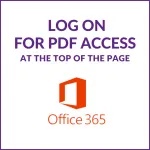| Résumé : |
Apple's former Design Chief, Jony Ive, described his work in this way: "My work is all about simplicity". Simplicity, sophistication, and practicality are indeed the foundations of Apple, both in its design and in its use, making it the number one most valuable brand according to Forbes for a decade. In this way, Apple has given the minimalist design a new lease of life and raised consumer awareness about it (Huang, 2019). Indeed, for several years, minimalism has been increasingly present and facing a growing success among consumers. For example, 78% of Millenials prefer consumption that tends towards minimalism (Weinswig, 2016). Minimalism can be defined by a very simple phrase of the minimalist architect, Ludwig Mies Van der Rohe, which is: 'Less is more’. Minimalism thus focuses mostly on the different elements of design such as colors, shapes, lights, and raw materials (Jinglong, 2014) to gain value through simplicity. Thus, in the various markets, whether food, cosmetics, or household products, minimalist has become a real trend and is being reflected in the packaging, which is becoming increasingly minimalist. It is taking shape both in established brands such as Kellogg's which has redesigned its cereal packaging and in new brands such as Typology and Spring (Appendix 1). As the role of packaging has evolved from transporting and preserving from prehistoric times to the 19th century, to gradually taking on informative and marketing proportions such as seducing, selling, differentiating, communicating, and making money (Appendix 2), it has become an important issue for brands. Indeed, it represents a unique communication mode for them to convey the advantages of their product, their positioning and brand image, and even their commitments. Packaging acts like a "silent salesman" (Rod, 1990). It is through these attributes that consumers, in a few seconds, choose to buy such or such packaging. As a consequence, the packaging must be as impactful and attractive as possible. Therefore, this study aims to assess the impact and attractiveness of packaging on consumers, but not just any kind of packaging: minimalist packaging. We would like to know if it really adds value for consumers and attracts them, and if so, to what extent. This study will also be a way to see if minimalist packaging represents a real opportunity for brands to differentiate themselves and a threat to those who continue to market non-minimalist packaging. As a first step, we will study different literature reviews about packaging and minimalism, from which we will gather certain learnings to orient our study hypotheses which are: consumers are more likely to buy minimalist packaging than non-minimalist packaging (H1), minimalist packaging vehicles simplicity, authenticity, and quality (H2), minimalist packaging vehicles sustainability (H3), minimalist packaging vehicles sophistication and luxury (H4). Secondly, we will test these hypotheses by a quantitative approach which will help us to collect the data thanks to a Qualtrics questionnaire to analyze it in Excel. Finally, in the third part, we will discuss the managerial implications, the limits of this study, and the scope of future research |
 Less is more: To what extent does minimalist packaging attract consumers? / Ophélie FRANCOIS / 2022
Less is more: To what extent does minimalist packaging attract consumers? / Ophélie FRANCOIS / 2022 
 LIBRARY - Campus Rouen
pmb
LIBRARY - Campus Rouen
pmb



